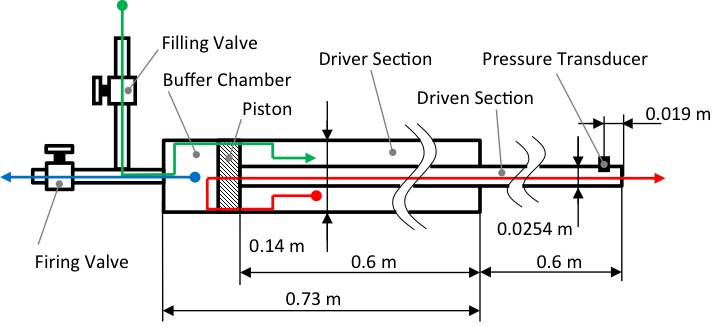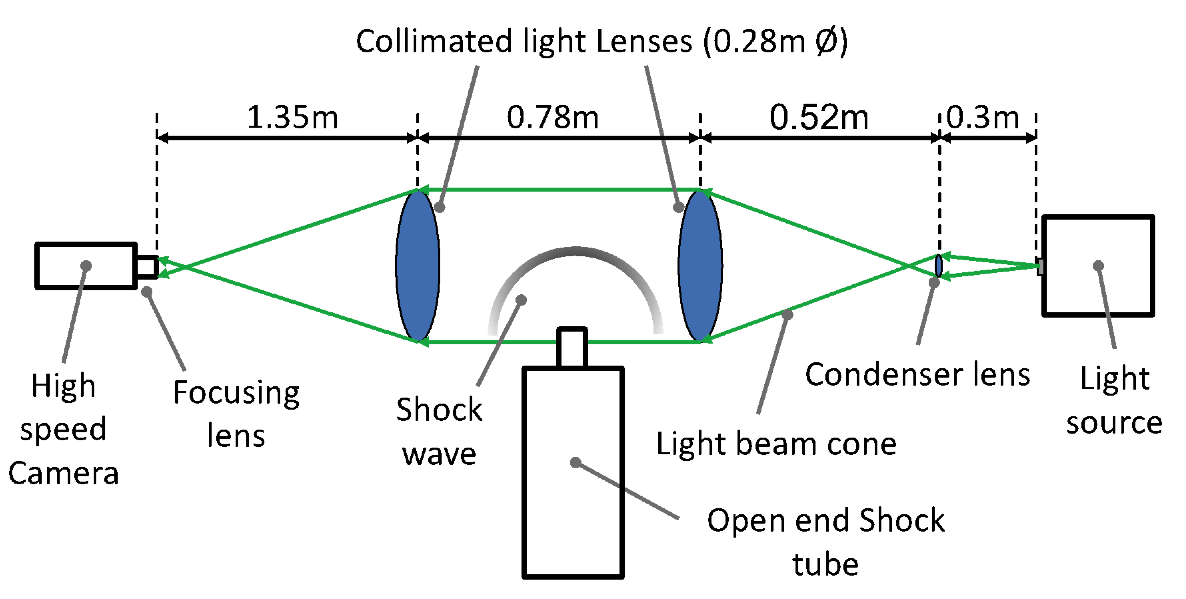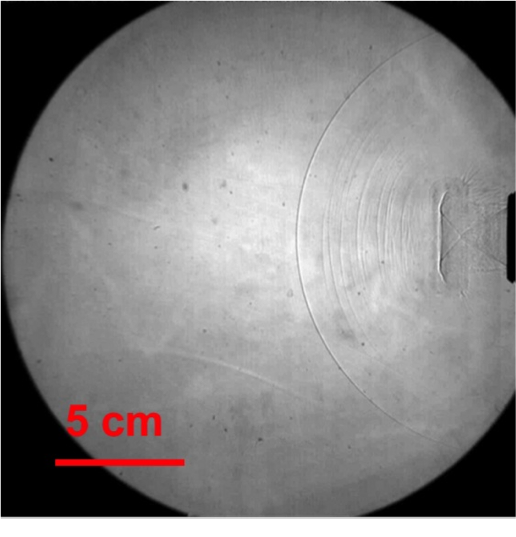Open-End Shock Tube Facility
An open-end shock tube was build with support from NSF and collaboration with Ezequiel Medici and Jeff Allen of MTU's Mechanical Engineering-Engineering Mechanics department. The shock tube facility is in the Advanced Energy Resources Building. The design is based on a modified Split-Hopkinson pressure bar test gun, which achieves reproducable results without the need for diaphrams common to many shock tubes. We are using this facility to simulate and investigate weak shock waves common to small-scale volcanic eruptions.
The open-end shock tube was equipped with:
-
a high speed camera capable of 3000 fps full-field up to 250,000 fps reduced field in a shadowgraph array from which the spherical shock waves imaged, Figure 2.
-
pressure transducers located at an adjustable distance from the end of the driver section was used to measure the pressure decay versus distance of the shock wave.
First results are published in: Medici, E.F., J.S. Allen, and G.P. Waite (2014) Modeling shockwaves generated by explosive volcanic eruptions, Geophysical Research Letters, 41, 414-421, doi:10.1002/2013GL058340.
Shock tube schematic

Schematic of the Split-Hopkinson pressure bar test gun used as open shock tube. Green, blue, and red lines indicate the filing, triggering, and expansion pads followed by the nitrogen, respectively.
Shadowgraph imaging schematic

Shadowgraph array used to image the shock wave.
Example images

Typical spherical shock wave at the end of the driven section. The driver section was loaded at 5.17 MPa (750 psi), images captured at 3000 fps and 1/1,000,000 shutter speed with a 60mm F mount lens. The illuminated area is 0.28m in diameter.
A video of the shock wave propagaing away from the end of the shock tube. This video was recorded at 30,000 fps and is played back at 1 fps. Field of view is approximately 9 cm x 9 cm. The shock tube driver section pressure was 5.17 MPa(750 psi).
A second animation, focused on the jet and particles entrained within the jet was also recorded at 30,000 fps and is played back at 1 fps. The field of view is approximately 9 cm x 9 cm. The shock tube driver section pressure was 5.17 MPa (750 psi). Particle diameter is 6mm
The following animation was recorded at 30,000 frames per second.
For more information, contact:
Ezequiel Medici
Research Engineer
Dept. of Mech. Eng.-Eng. Mech.
Michigan Technological University
506 R. L. Smith Building
1400 Townsend Drive
Houghton, Michigan 49931
efmedici@mtu.edu
|




